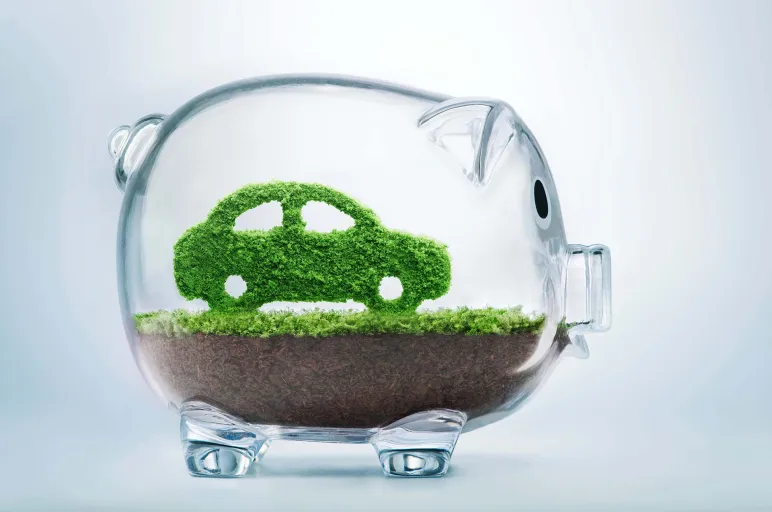
Tariffs and Clean Energy: Understanding the New Reality of Supply Chain Disruption
- Tariff-driven cost hikes are forcing clean energy supply chains toward immediate diversification or face extinction.
- Procurement teams must absolutely evaluate suppliers on geopolitical risk, not just cost and quality.
- Organizations with flexible, multi-region supplier networks will outlast those betting on single sources.
September 23, 2025 | Risk Management 5 minutes read
The clean energy sector globally is sitting pretty right now in terms of cost competitiveness. But trade policy is throwing a wrench into the works. Recent tariff implementations across major economies are reshaping supply chains that took decades to build.
For procurement pros managing energy portfolios, this isn't just another challenge to tick off the list. It's a fundamental shift that calls for some serious strategic thinking.
Here's where it gets complicated. Modern clean energy supply chains don't just hop from point A to point B. They're complex webs spanning multiple nations, with each one contributing something specialized. Your solar panels might have silicon from Asia, pull inverters from Europe, and snag mounting systems from North America. This geographical spread used to be a strength - and this worked really well for risk mitigation. Now the same thing is becoming a major vulnerability.
Looking for Ways to Protect Your Business from Tariff Disruptions
GEP can help you navigate the unpredictability and protect your margins with confidence
ASK US NOW
Three Scenarios That Illuminate the Future of Clean-Energy Technology Supply Chains
How might tariffs reshape the clean energy landscape? That's the million-dollar question. To get our heads around it, we need to look at multiple potential futures. Each one presents its own headaches and opportunities for supply chain strategists.
First up: moderate tariff implementation with selective exemptions for critical clean energy components. This approach recognizes that energy transition matters while still protecting domestic manufacturing interests. Procurement teams would see manageable cost bumps. Think 5-15% on certain components. Not fun, but manageable. We're talking tactical sourcing adjustments rather than burning everything down and starting over.
Scenario two gets uglier. Aggressive tariff escalation across all clean energy imports. This environment would eventually force dramatic supply chain overhauls, with cost impacts potentially in the range of 25-40% for key technologies. Companies wouldn't just need to balance short-term price swings against long-term supply security, they will likely have to pace up domestic manufacturing investments, just to survive.
The third scenario? Strategic tariff targeting of specific technologies or countries. This selective approach could create clear winners and losers within the clean energy ecosystem. Organizations with diversified supplier bases come out ahead. Those with concentrated sourcing strategies? They're in for a rough ride.
How High Tariffs May Hinder Adoption and Increase Cost of Energy Technologies
Let's talk numbers. The math on tariff impact for clean energy deployment isn't pretty. Current analysis suggests broad-based tariffs could bump solar installation costs by 20-30%. Wind energy too is facing similar pressure. These increases won't just stay on paper, but they will result directly in longer payback periods and reduced competitiveness against fossil fuel alternatives.
But there's more! The ripple effects go way beyond immediate project costs. Higher tariffs create market uncertainty that makes everyone hit the pause button on investment decisions. Developers postpone projects while they wait for policy clarification. This creates a pipeline bottleneck that affects the entire supply chain. Component suppliers face demand that's all over the place, leading to production planning nightmares that drive costs even higher.
According to Gartner's recent survey, 45% of supply chain leaders plan to pass tariff costs directly to their customers as their primary mitigation strategy. This pass-through approach protects margins, sure. But it also increases end-user costs and potentially slows clean energy adoption rates.
Supply chain resilience becomes everything in this environment. Organizations betting on single-source dependencies? They're facing the highest risk. Those with geographically diversified supplier networks maintain much better flexibility. However, diversification isn't free. It carries costs in quality management, logistics complexity, and relationship maintenance.
Decoding Tariff Impact: A Step-by-Step Guide To Assess Exposure and Risk
A practical framework to evaluate tariff exposure, identify cost deltas & challenge supplier hikes
Potential for Additional Tariffs Ahead
Here's the thing - what we're seeing now is just the appetizer. Political dynamics in major economies suggest we'll see additional measures targeting strategic technologies. From batteries to critical minerals to advanced manufacturing equipment - everything is in the crosshairs.
Future tariffs may go beyond traditional trade protection. National security considerations are increasingly driving policy decisions. Critical mineral processing, battery manufacturing, and grid infrastructure components could face enhanced scrutiny. What this means is that procurement professionals can't evaluate suppliers on cost and quality alone anymore. Geopolitical risk factors have become part of the equation.
The interconnected nature of global supply chains makes this even trickier. A tariff on Chinese solar panels doesn't just affect U.S. imports. It influences global pricing, capacity utilization, and investment patterns across all markets. What happens in one region will eventually cascade everywhere else.
Impact of Prolonged and Elevated Tariffs on Clean-Energy Technology Adoption
Extended periods of high tariffs won't just bring temporary headaches, they will most certainly fundamentally alter the clean energy investment landscape. Short-term disruptions? You can manage those through inventory management and alternative sourcing. Sustained tariff regimes force structural changes in how organizations approach energy procurement and deployment.
Effects on Energy Producers
Energy producers have a complex puzzle at hand, when evaluating new projects under prolonged tariff scenarios. Traditional financial models prove to be useless when input costs fluctuate based on trade policy rather than market fundamentals. Such uncertainties also stretch project development timelines and push up financing costs as lenders demand higher risk premiums.
Large-scale renewable energy developers might pace up vertical integration strategies, bringing more of the supply chain under direct control. This could reduce tariff exposure, but will need significant capital investment and operational expertise outside traditional core competencies. The resulting industry consolidation could reduce competition and innovation over time.
Smaller energy producers don't have the scale for vertical integration, clearly making them vulnerable to tariff-induced cost increases. These companies must bring in more sophistication in supply chain management, potentially with new technology investments and personnel development. It's more like - adapt or get left behind.
Impact on Network Operators
Grid operators and utilities have their own set of problems with sustained tariff environments. Infrastructure upgrades necessary for increased renewable generation become more expensive, potentially delaying grid modernization efforts. This creates a feedback loop where slower grid development limits renewable energy integration capacity.
The timing mismatch becomes critical here. Renewable energy projects face immediate cost increases while grid infrastructure upgrades experience similar tariff impacts. If both components of the energy transition become more expensive simultaneously, the overall pace of decarbonization could slow down faster than anticipated.
Network operators with long-term planning horizons now must integrate trade policy scenarios into their strategic planning. This requires new analytical capabilities and closer coordination with procurement teams to understand supply chain vulnerabilities across their infrastructure portfolios.
Conclusion
While immediate disruptions will continue to grab headlines, long-term implications for global competitiveness and climate objectives will require equal attention.
Success in such an environment requires procurement organizations to evolve beyond cost optimization and develop supplier diversification strategies, investing in supply chain visibility technologies. They'll also need to build closer relationships with key partners to weather policy volatility together.
AI and advanced analytics integration will be key to navigating this complex landscape. Plus, organizations will need to rely on predictive models that incorporate policy risk alongside traditional supply chain factors for better decision-making under uncertainty.
Looking ahead, today's challenges may ultimately strengthen the clean energy sector. Organizations that successfully navigate this period will emerge with more resilient supply chains, deeper supplier relationships, and enhanced risk management capabilities.
Also Read: GEP Tariff Management Resource Center



